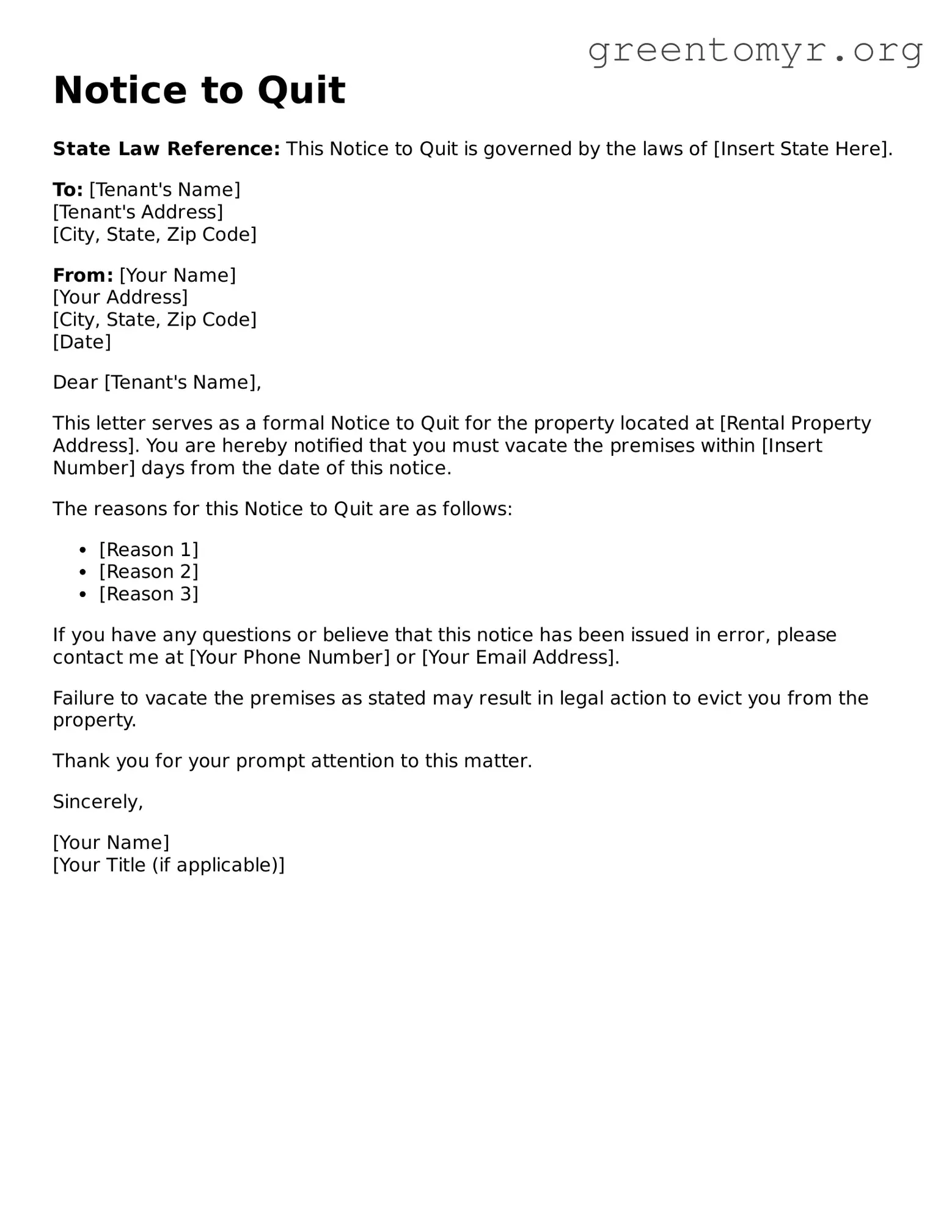Notice to Quit
State Law Reference: This Notice to Quit is governed by the laws of [Insert State Here].
To: [Tenant's Name]
[Tenant's Address]
[City, State, Zip Code]
From: [Your Name]
[Your Address]
[City, State, Zip Code]
[Date]
Dear [Tenant's Name],
This letter serves as a formal Notice to Quit for the property located at [Rental Property Address]. You are hereby notified that you must vacate the premises within [Insert Number] days from the date of this notice.
The reasons for this Notice to Quit are as follows:
- [Reason 1]
- [Reason 2]
- [Reason 3]
If you have any questions or believe that this notice has been issued in error, please contact me at [Your Phone Number] or [Your Email Address].
Failure to vacate the premises as stated may result in legal action to evict you from the property.
Thank you for your prompt attention to this matter.
Sincerely,
[Your Name]
[Your Title (if applicable)]
